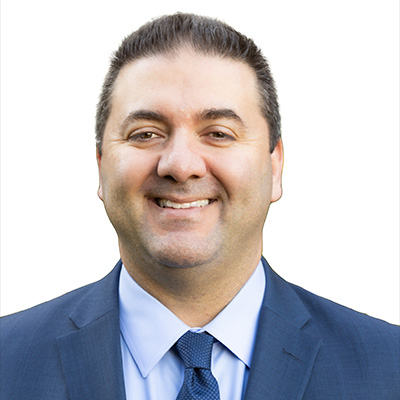What exactly is Liability?
Liability refers to a legal claim made against another individual or organization. When a party is responsible for a specific physical problem, that party may be held financially liable for the harms caused to an accident victim. Liability is a crucial element in the success of personal injury cases.
Everyone is seen as responsible for their acts under law. Additionally, the law assumes that we have a duty to behave in a way that doesn’t harm other people. The obligation to act in good faith is another word for this. If someone violates a responsibility and causes an injury, they are considered to be accountable. With these definitions in mind, liability can be defined as follows:
- A person has a responsibility to other people.
- Someone else suffers harm or loses something as a result if that individual doesn’t do it.
- The penalties are the responsibility of the person who failed to perform their duty.
Remember that there must be some kind of damage or loss. If there are no losses or injuries, damages are not responsible. The mere existence of a risk without a resulting loss or injury cannot be the basis of a personal injury claim. Contact our experts to see if you have a liability claim
Establishing Liability for Personal Injury by Proving Negligence
Since negligence cannot be refuted, proof of negligence alone is sufficient to prove culpability and, therefore, liability. One of the fundamental tenets of law is this. Although this explanation may be unduly straightforward, there are only two degrees of negligence: none or all. As a result of the legal presumption that a cautious and reasonable person would not be negligent, an act that is attributable to negligence is sufficient to establish culpability. You must provide evidence of the following in court to establish another party’s liability:
- You have a responsibility of care to the involved party. The law compelled the defendant, who was at fault, to take exceptional precautions to prevent harm. For example, it is the responsibility of property owners to keep their premises reasonably safe for guests, and it is the responsibility of drivers to obey traffic regulations to protect other road users.
- The offending person broke their duty of care. Whether intentionally or negligently, the defendant breached their obligation to keep you safe. For instance, a property owner who neglects to maintain a damaged railing or a drunk motorist.
- Your injuries were brought on by negligence. The “proximate cause” of your injury was the defendant’s breach of their duty of care. Or, to put it another way, the defendant’s negligence prevented your damage from happening.
- Damages: You suffered a loss of health, happiness, or financial security. You cannot bring a claim against a defendant even if they were negligent if you did not sustain any damages.
Not sure if your evidence is enough? Talk with our experts and find out!
Other Methods of Proving Fault for Liability Personal Injury
Due to the wide variety of accidents and injuries, there are several categories of liability. For example, if a store or local government’s floors or roads are poorly maintained, they could be held “publicly liable.” They are required to acquire “public liability insurance” as a result, which will pay for their legal costs if they are the target of a claim. Another form of liability known as “employers liability” is imposed on businesses that neglect to provide enough protection for their workers, such as if you were hurt because you lacked the necessary safety equipment. They should be covered by “employers’ liability insurance”, which will pay them if they are sued. The question of fault is decided by a jury, as was already established. That is what this truly means. There needs to be proof to back up blaming one or more parties. This type of evidence includes eyewitness testimonies of the collision, tangible items like pictures or videos recorded at the site, and the accident report written by the investigating officer.
Civil litigation does not necessitate the same level of proof as criminal proceedings. In contrast, proving responsibility in a civil claim merely requires a “preponderance”, or weight of the evidence. Any evidence that the jury deems to be more “believable” or “trustworthy” than other evidence may be accepted or rejected.
Proving Liability in a Personal Injury Lawsuit
A jury determines whether a defendant was negligent in a personal injury case based on the evidence that was presented in court. The plaintiff must establish negligence and a causal chain in order to prove culpability.
Negligence is defined as failing to exercise the same degree of care as a prudent person would in a similar situation. The jury’s job is to decide what a reasonable person would have done in the defendant’s circumstances.
Your lawyer starts out by presenting an argument based on what a sane person would do in a specific situation. The defense attorney then makes an argument based on the evidence that the defendant’s actions fell short of this threshold and caused the incident that injured you.
Evidence demonstrating negligence in a car accident includes footage of the collision, statements from witnesses, testimony from experts, and other proof of culpability.
The jury determines how much money the plaintiff should pay to the offended party as damages if the jury’s verdict is found to be wrong.
Negotiations with the party’s liability insurance provider result in the resolution of the majority of personal injury cases. The parties negotiate a claim settlement without resorting to litigation. Whether or whether you file a claim, the case may be resolved without a preliminary hearing.
Strict Personal Injury Liability
In a “strict liability” situation, the other party is automatically assumed to be responsible for your harm without the need for evidence. This often occurs when one party undertakes responsibility on their own since they have no other options. For instance, under the Purchaser Security Act of 1987, the manufacturer is “strictly at risk” if you were hurt as a result of a defective item.
You just need to demonstrate that the other party was at fault for your harm and that you received compensation. Strict responsibility is frequently applied in cases of product liability. For instance, if you can show that a product was defective and you were hurt, you may be able to get compensation without proving negligence or recklessness.
What Sorts of Damages Can You Recover in an Accident Case?
The party responsible for your injuries may be held accountable for both economic and non-economic damages if you bring a personal injury lawsuit. Talk with our experts to find out what types of damages you can claim
The amount of your claim will depend on how serious your injury is. The following sorts of damages are typically covered by personal injury claims:
- medical expenses
- loss of perks and wages
- Health care and personal care expenses
- reduced possibility for future earnings
- the inability to enjoy life
- bodily discomfort and suffering
- a lower standard of living
- mental pain and emotional distress
- permanent disabilities and impairments
- Property Damage your monetary losses, as well as the potency of your proof of responsibility and damages.









